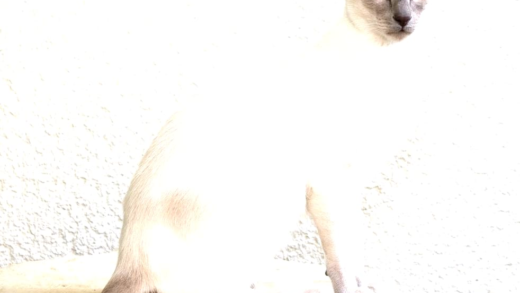The Gooty sapphire tarantula, known for its vibrant blue coloration, is studied through field observations and genetic analysis. This species faces threats like habitat loss and climate change, making conservation efforts essential. Its stunning appearance and unique behaviors attract arachnid enthusiasts, promoting responsible ownership and awareness.
Gooty Sapphire Tarantula Overview: What Makes It Special?
The Gooty sapphire tarantula is a remarkable arachnid, known for its striking blue coloration and unique characteristics. This species, native to India, captures the fascination of both scientists and enthusiasts alike. Gooty sapphire tarantulas are part of the Poecilotheria genus, commonly referred to as tree tarantulas. They exhibit a stunning combination of vibrant hues that can vary from deep blue to metallic shades, making them a true marvel of nature.
One notable feature of the Gooty sapphire tarantula is its size. Adult specimens typically reach a leg span of 4 to 5 inches, and their slender bodies add to their graceful appearance. Their silk-spinning ability is impressive, allowing them to create elaborate webs in their natural habitats, which consist of trees and dense foliage. This adaptation not only aids in catching prey but also provides safety from predators.
Additionally, their unique coloration is not just for show. The blue hues serve as a form of camouflage among the vibrant leaves and flowers of their native environment, helping them evade potential threats. The Gooty sapphire tarantula’s striking appearance, combined with its intriguing behavior and habitat, makes it a significant species in the world of arachnids.
Peacock Tarantula Name: Why Is It Called That?
The nickname peacock tarantula stems from the tarantula’s vibrant coloration, which resembles the iridescent feathers of a peacock. This comparison highlights not only the beauty of the Gooty sapphire tarantula but also emphasizes its role in attracting mates. Just like peacocks display their plumage, these tarantulas exhibit their vivid colors during courtship rituals, showcasing their health and vitality to potential partners.
The name also reflects the tarantula’s striking visual appeal. Enthusiasts often use this nickname when referring to the Gooty sapphire tarantula, as it captures the essence of its beauty. This connection to the peacock also enhances the tarantula’s popularity among collectors, as they seek to own such a visually stunning creature.
Understanding the origins of the name helps in appreciating the cultural significance and allure of the Gooty sapphire tarantula within the arachnid community. It is a testament to how nature’s designs can inspire admiration and fascination.
The Blue Color Explained: What Makes It Stand Out?
The vibrant blue coloration of the Gooty sapphire tarantula is not merely aesthetic; it has a scientific basis rooted in structural coloration. Unlike pigments, which absorb certain wavelengths of light, the blue hues in this tarantula result from microscopic structures in its exoskeleton that reflect light in a specific way. This phenomenon creates an iridescent effect that changes with the angle of light, making the tarantula appear even more vivid.
Research indicates that this blue coloration may serve multiple purposes. Firstly, it plays a crucial role in communication, particularly during mating displays. Males may use their vibrant colors to attract females, showcasing their fitness and genetic quality. Secondly, the coloration provides effective camouflage among the blue and green hues of their natural habitat, aiding in predator avoidance.
Interestingly, the presence of blue coloration in tarantulas is relatively rare, making the Gooty sapphire tarantula a unique specimen in the arachnid world. Its captivating appearance not only draws attention but also raises questions about the evolutionary advantages of such vibrant colors in nature. The study of this tarantula’s coloration contributes to our understanding of biodiversity and the adaptations of species in various environments.
Natural Habitat: Where Do They Live?
The Gooty sapphire tarantula thrives in the lush forests of India, particularly in the Gooty region of Andhra Pradesh. This habitat is characterized by dense foliage, tall trees, and a warm, humid climate, creating an ideal environment for these remarkable arachnids. The Gooty sapphire tarantula prefers to inhabit tree trunks and branches, where they can easily construct their silk webs. This arboreal lifestyle not only provides them with shelter but also aids in capturing prey.
Ecologically, the Gooty sapphire tarantula plays a crucial role in maintaining the balance of its habitat. By preying on insects and small creatures, it helps control populations that could otherwise become pests. Their presence also indicates a healthy ecosystem, as they rely on a rich biodiversity to thrive. Unfortunately, habitat destruction due to deforestation poses a significant threat to their survival, making conservation efforts vital.
Behavioral Traits: How Does Color Affect Their Survival?
The blue coloration of the Gooty sapphire tarantula is not just a stunning visual trait; it plays an essential role in their survival. This unique blue hue provides effective camouflage against the vibrant colors of their forest environment. When perched among leaves and flowers, these tarantulas can easily blend in, avoiding detection by predators.
Additionally, the coloration impacts their social behavior, especially during mating seasons. Males display their vivid colors to attract females, signaling their fitness and genetic quality. This display can be crucial for successful mating, as females are more likely to choose brightly colored males. However, this vibrant appearance also comes with risks; while it helps in attracting mates, it may also draw the attention of potential predators.
Thus, the blue coloration serves dual purposes: enhancing reproductive success while providing essential camouflage. Understanding these behavioral traits gives insight into the evolutionary adaptations of the Gooty sapphire tarantula, showcasing how beauty and survival are intricately linked.
Diet and Feeding: What Do They Eat?
The peacock tarantula, including the Gooty sapphire variant, has a diverse diet primarily consisting of insects. Their feeding habits include consuming various prey such as crickets, roaches, and other small arthropods. This carnivorous diet is vital for their growth and energy needs.
Gooty sapphire tarantulas employ a unique hunting technique. They use their silk to create webs that trap unsuspecting prey. Once caught, they inject venom to immobilize their catch, allowing for easier consumption. Their feeding strategy is adapted to their arboreal lifestyle, where they can ambush prey from their elevated positions.
Understanding the dietary preferences of the Gooty sapphire tarantula provides valuable insights into their role in the ecosystem. By regulating insect populations, they help maintain ecological balance, underscoring the importance of preserving their natural habitat.
Research Methods: How Do Scientists Study Them?
The study of the Gooty sapphire tarantula involves various scientific methods to understand its unique coloration and behavior. Researchers employ techniques such as field observations, where scientists monitor tarantulas in their natural habitats to gather data on their behavior and interactions. These observations help in understanding how environmental factors influence their blue coloration and survival strategies.
Another method used is genetic analysis. Scientists extract DNA samples to study the genetic basis of the tarantula’s vibrant hues. This research can reveal how specific genes contribute to their structural coloration, offering insights into evolutionary adaptations.
Additionally, laboratory experiments allow researchers to simulate various environmental conditions. By altering light conditions or habitat variables, scientists can observe how these factors affect the tarantulas’ behavior and coloration. This multifaceted approach helps in painting a comprehensive picture of the Gooty sapphire tarantula’s ecology.
Challenges in the Wild: What Threats Do They Face?
The Gooty sapphire tarantula faces several challenges in the wild, primarily due to habitat loss. Deforestation in India, driven by agricultural expansion and urban development, threatens their natural habitats. As their forest homes disappear, these tarantulas struggle to find suitable environments to live and hunt.
Additionally, climate change poses risks through altered weather patterns and increased temperatures, affecting their survival. The peacock tarantula also encounters threats from poaching, as collectors seek these unique creatures for their vibrant appearance. This demand can lead to overharvesting, further endangering their populations.
Conservation efforts are crucial to protect the Gooty sapphire tarantula. Creating protected areas and raising awareness about the importance of preserving their habitats can help mitigate these threats.
Enthusiast Appeal: Why Are They So Popular?
The Gooty sapphire tarantula has gained immense popularity among arachnid enthusiasts and collectors, primarily due to its stunning appearance. The vibrant blue coloration is not only visually appealing but also rare, making it a prized addition to any collection. Enthusiasts are often drawn to the challenge of caring for such unique tarantulas, which adds to their allure.
Moreover, the fascinating behaviors and characteristics of the peacock tarantula captivate hobbyists. Observing their feeding habits, web-building techniques, and courtship displays offers an engaging experience for those interested in arachnology. This combination of beauty and intrigue has led to a growing community of enthusiasts who actively share knowledge and experiences related to the Gooty sapphire tarantula.
Finally, the educational aspect of keeping these tarantulas encourages responsible ownership and conservation awareness, as many collectors strive to promote the importance of protecting this remarkable species.



Comments are closed.